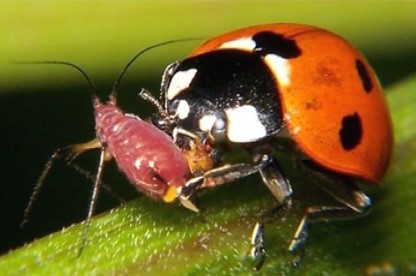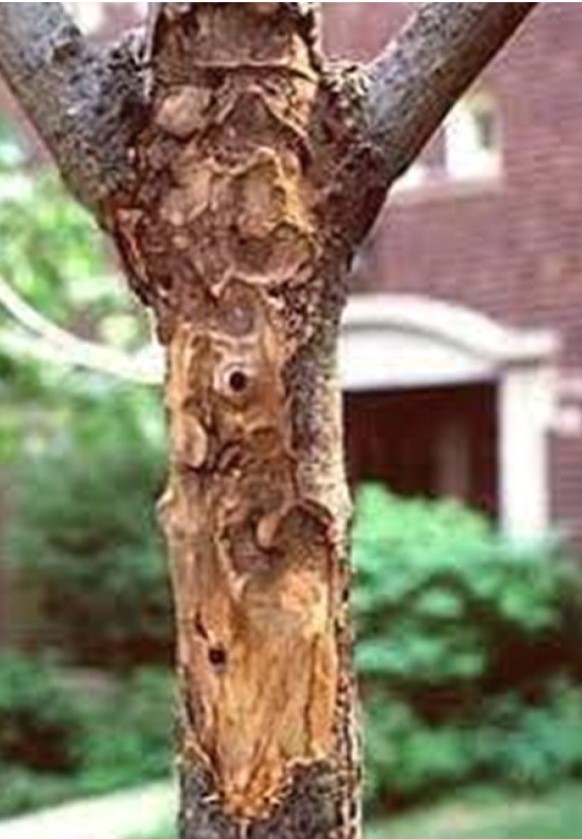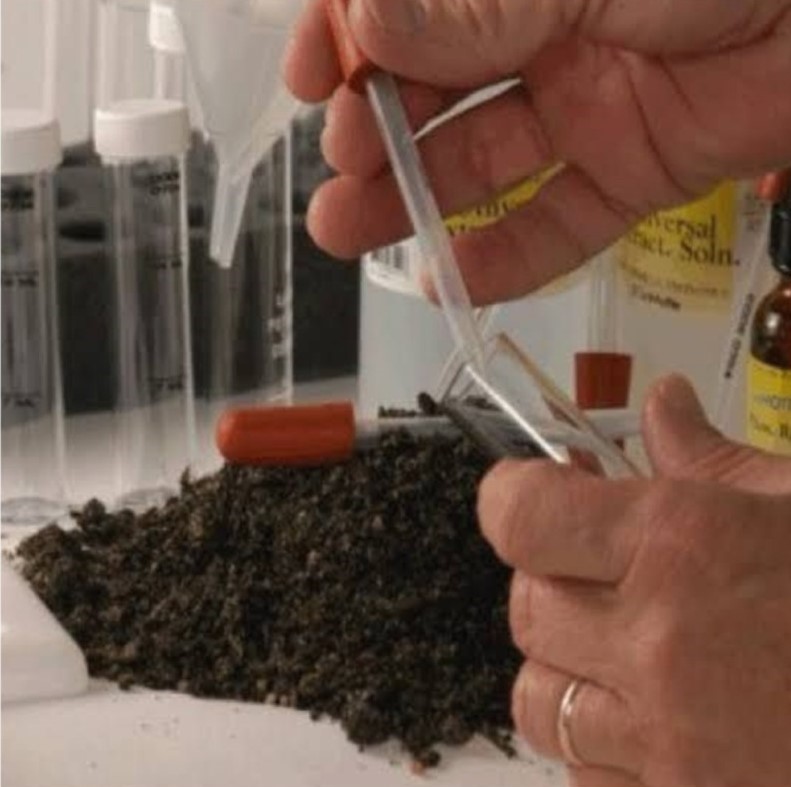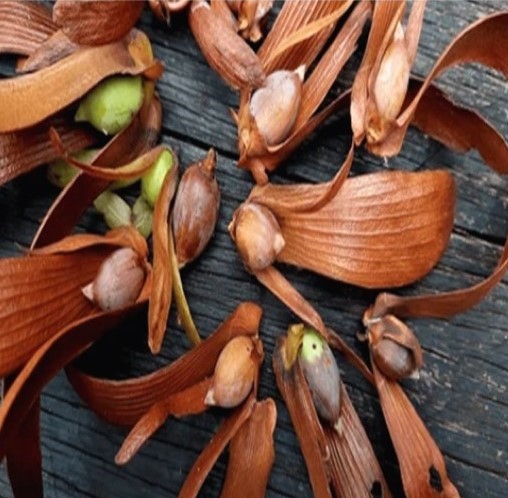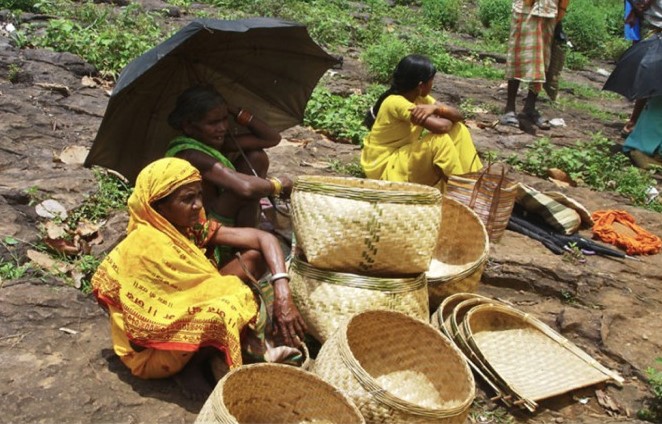State Forest Research and Training Institute (SFRTI)
- Zero Point, Near Vidhansabha, Baloda Bazar Road, Raipur- 493111 C.G.
- 0771-2285120, 2285121
Research Divisions
For carrying out research and training works smoothly, 9 research divisions have been set up in the State Forest Research and Training Institute as given bellow:-
Biodiversity, Ecology and Climate Change Division
Departments of Forest Ecology, Botany, Wildlife and Climate Change constitute the Division. The thrust areas of research of the Division are ecosystem and landscape analysis, rehabilitation and restoration, population ecology, biodiversity evaluation and conservation of fragile ecosystems, traditional knowledge system analysis and biodiversity-informatics. Inventorisation of biodiversity of different forest types and protected areas, evaluation of below-ground biodiversity, taxonomic studies and conservation of RET species of flora have been some areas of research in the Division. Besides, the Wildlife Department deals with inventorisation of fauna, endangered animals, man-wildlife interaction and wildlife census.
Biotechnology Division
The Division consists of Genetics and Tree Breeding as well as Biotechnology Departments. The main thrust areas of research under this Division are
- Selection of plus trees and genetic improvement.
- Studies on breeding system parameters and gene flow.
- Tissue culture and low-cost micropropagation technology.
- Population Genetics using dominant and co-dominant molecular markers.
- Association mapping for adaptive traits.
- Molecular diagnosis of genetic disorders
- Development of bioinformatic tools and data base for priority species.
Silviculture Division.
Silviculture occupies a pivotal position in forestry and afforestation programmes. Silviculture is an applied science of forestry which concern with various treatments of forest stands that may be applied to maintain an enhanced productivity. At SFRTI Silviculture Division often forms the link between theory and practice by focusing on:
- Techniques of afforestation.
- Management of plantations.
- Raising of nurseries.
- Establishment of live collections..
Agroforestry & Extension Division.
Agroforestry Division have made efforts to identify relationship between socio-economic status of the household and tree cropping intensity. The mandate of an Agroforestry Division is to promote and implement the practice of agroforestry, which involves integrating trees and shrubs with crops and livestock on the same land, aiming to enhance agricultural productivity, improve livelihoods of farmers, and contribute to environmental sustainability by practices like soil conservation, carbon sequestration, and biodiversity enhancement; essentially, to encourage farmers to plant trees alongside their crops to reap multiple benefits from the same land.
- Research and Development: Conducting research on suitable agroforestry systems based on local conditions
- Extension and Outreach: Educating farmers about the benefits of agroforestry, providing technical assistance on designing and implementing agroforestry systems.
- Seed and Nursery Production: Ensuring availability of quality planting materials
- Policy Advocacy: Promoting policies and incentives that encourage farmers to adopt agroforestry practices
- Monitoring and Evaluation: Tracking the progress of agroforestry projects, assessing their impact on farmers' livelihoods and the environment.
Non Timber Forest Produce Division.
Non-Timber Forest Produces (NTFP) Division takes up studies on ethnobotany, sustainable extraction of NTFPs, phyto-chemical analysis and systematic studies on the NTFPs. Ethnobotany, a highly promising branch of science is a point of convergence of various related subjects like ethnomedicine, ethnopharmacology, etc. Identification of target molecules through phyto-chemical analysis makes its application precise and purpose oriented. Once the active ingredients of a species is identified and separated, their presence can be examined in other plants also. This reduces the pressure on the traditional source and thereby the threat of depletion.
One of the ways to sustain NTFP resources is through sustainable harvesting. For sustainable harvesting should be proportionate to the regeneration rate of the resource.
capacity of NTFP species to regenerate after different rate of harvesting is measured by regeneration index method. Regeneration index of important annual and biennial NTFP species were studied and their sustainable harvesting standardized.
Forest Protection & Insect Control Division.
In Forest Protection Division, the thrust areas include monitoring of forest insect diversity, control of termites in plantations, wood damaging insects and teak defoliator, traditional methods of post-harvest protection of bamboo from insect borers, etc. The mass production technology of the biopesticide has been standardized, and the application technology has been transferred to stakeholders
Research programmes in the Department of Forest Protection deal with following general issues in forestry and conservation
- Evaluation of the present and potential insect pest problems relevant to forestry in Kerala.
- Development of suitable methods or procedures to reduce the economic loss caused by the pests.
- Study of the soil biology with special reference to the insect biota.
- Biological control of the insect pests.
In addition to this problem-solving research, some fundamental studies on the taxonomy, biology and ecology of insects are undertaken to increase our understanding of the interaction between insects and trees and the role of insects in the forest. Such understanding, apart from advancing the knowledge in Entomology, is often necessary for developing better and environmentally safe pest management strategies.
Soil Science Division
Soils provide anchorage, hold water plus air and supply nutrients to plants. Studies on the nature and properties of soils are therefore essential for understanding soil-vegetation interactions in forest ecosystems. The Soil Testing Lab, established in 2012–13, has undertaken several problem-oriented projects in the following areas:
- Studies on the nature and properties of soils in plantations across Chhattisgarh.
- Effect of monoculture on soils
- Influence of site factors in plantations of various species.
- Protocols for Foliar analysis to assess soil test methods for NPK.
- Land degradation and restoration in the human impacted landscapes
The Division has also undertaken studies of an advisory nature for the Chhattisgarh Forest Department by answering queries on various aspects based on field investigations. These investigations will generate soil database useful in forest management.
Seed Certification Division.
The department carrying out Seed physiological and biochemical studies of recalcitrant seeds; Developing Protocols for clonal and seed propagation of Threatened trees/ NTFPs/ Fast growing indigenous trees/ lesser-known wild fruit trees; Climate change impact on endemic and threatened trees; Restoration and population size enhancement of threatened Species, etc. comes under the domain of the Department of Tree Physiology. The broad areas of research of the Department includes:
- Biology, physiology and biochemistry of forestry seeds. Studies on the diseases and insect pests of forestry seeds and evolution of their prophylactic and control measures.
- Preparation of a field manual for handling of forestry seeds containing species-specific information on proper collection time, collection method, seed weight, dormancy, viability period, germination percent, pre-sowing treatments, safe storage techniques, etc
- Maintenance of the existing and establishment of new quality seed stands.
- Conversion of seed stands into seed production areas.
- Development of suitable techniques for enhancement of productivity of seed production areas and seed orchards.
- Collection of seeds from identified seed stands, seed production areas and seed orchards.
- Development of suitable seed storage techniques for various species.
- Seed certification and distribution of certified seeds.
Livelihood Promotion Division.
At Division of Livelihood Promotion, the thrust areas are action research programmes involving traditional forest based income generating activities including bamboo crafts, NTFP collection and marketing, ecotourism etc. Apart from this department also takes up preparation of plans for voluntary resettlement and social impact assessments of development and conservation programmes. The division also takes up policy research with a thrust on the historical process of policy making and implementation of policies. Considerable attention is being paid to community forestry in the country today in afforestation, watershed development, raising energy plantations etc. Chhattisgarh has also launched an ambitious Participatory Forest Management Programme, in which the main thrust is on sharing incentives of sustainable use of forests including responsible tourism with local people. The department has been involved in the implementation and evaluation studies of the PFM.








